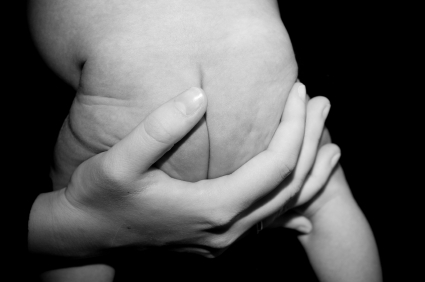Breech babies make up only 3-4% of all births, yet they represent a disproportionate share of homebirth deaths. Why? Because breech birth is dangerous.
I’ve written before that, contrary to the prattling of homebirth advocates, breech is not a variation of normal. I have also pointed out that homebirth advocates indicate their awareness of this when they brag about breech homebirths in which the baby did not die.
Homebirth advocates are fond of quoting the PREMODA study to support the decision for breech birth at home, conveniently ignoring the fact that the PREMODA study found that breech birth could be relatively safe in high resource settings, using extremely strict exclusion criteria, and attended by a very experienced obstetrician (though even then not as safe as C-section). Obviously, none of that applies at homebirth.
So what is the real risk of breech homebirth? I just came across a study about breech birth in low resource settings that put the risk of breech birth in perspective and the risk is huge.
As the name of the study, Neonatal Outcome of Term Breech Births: A 15-Year Review at the Yaoundé General Hospital, Cameroon, indicates, it looked at breech birth in a low resource setting, a hospital in the developing world. Like the PREMODA study the breech births took place in a hospital with access to emergency C-section, involved some exclusion criteria and were attended by obstetricians and midwives. Unlike the PREMODA study, however, the exclusion criteria were not extremely strict and births were attended by obstetricians and midwives, not necessarily those who had the most experience in breech birth.
What did the authors look at?
We conducted a cross-sectional analysis of data collected from March 1992 to March 2007 at the Yaoundé General Hospital, Cameroon…
From the birth registers and the neonatal discharge summaries we identified respectively all term singleton breech deliveries and all term breech delivered infants transferred to the neonatal unit. The mode of delivery, cesarean or vaginal was also noted. The exclusion criteria were multiple pregnancies, antenatal fetal death, and major fetal congenital malformation such as anencephaly and hydrocephaly… The sample size calculated using the incidence of breech delivery of 3% was 45 with a confidence interval of 95%.
Even in this low resource setting, elective C-section was performed nearly 30% of the time because breech vaginal birth was felt to be too dangerous.
… Of 249 term singleton infants in breech presentation, 73 (29.31%) were born by elective cesarean section and 176 (70.67%) were allowed for trial of vaginal delivery with 136 (54.61%) delivered vaginally and 40 (16.06%) delivered by intra-labor cesarean section.
What did the authors find?
… Compared to infants born by elective cesarean section, those delivered vaginally or by intra-labor cesarean section were more likely to have low 5-minute Apgar scores (4.1% vs. 17.77%; P <.001), require admission to neonatal unit (08.21.% vs. 13.63%;P <.001), and have an increased risk for perinatal mortality (0% vs. 05.68%; P < .001). Trial of vaginal delivery of term infants in breech presentation was associated with significantly increased risk of perinatal death and neonatal morbidity.
In other words, more than 1 of every 20 term breech babies died despite the fact that the delivery took place in a hospital with access to emergency C-section and despite the fact that more than 1 in 5 were ultimately born by C-section anyway. To put that into perspective, the Hannah trial, the study that found that breech vaginal birth increased the risk of perinatal death, found only a 1.3% rate of perinatal death at breech vaginal birth.
Homebirth is not a low resource setting; it is a no resource setting. There is no ability to perform an emergency C-section and most homebirth midwives have no exclusion criteria for breech homebirth. The perinatal death rate for breech homebirth is almost certainly much higher than 5.68%.
Why do so many breech babies die at homebirth? Because breech vaginal delivery is extremely dangerous.
Rather than boasting about breech homebirth, homebirth advocates should be ashamed of taking such a hideous risk with the lives of their breech babies.


